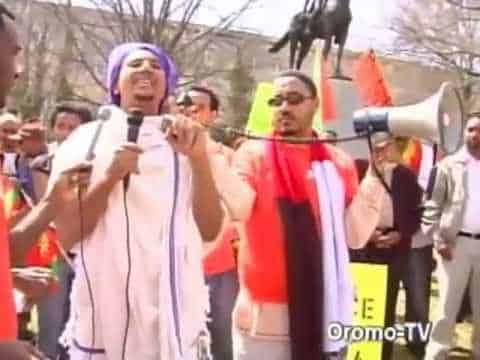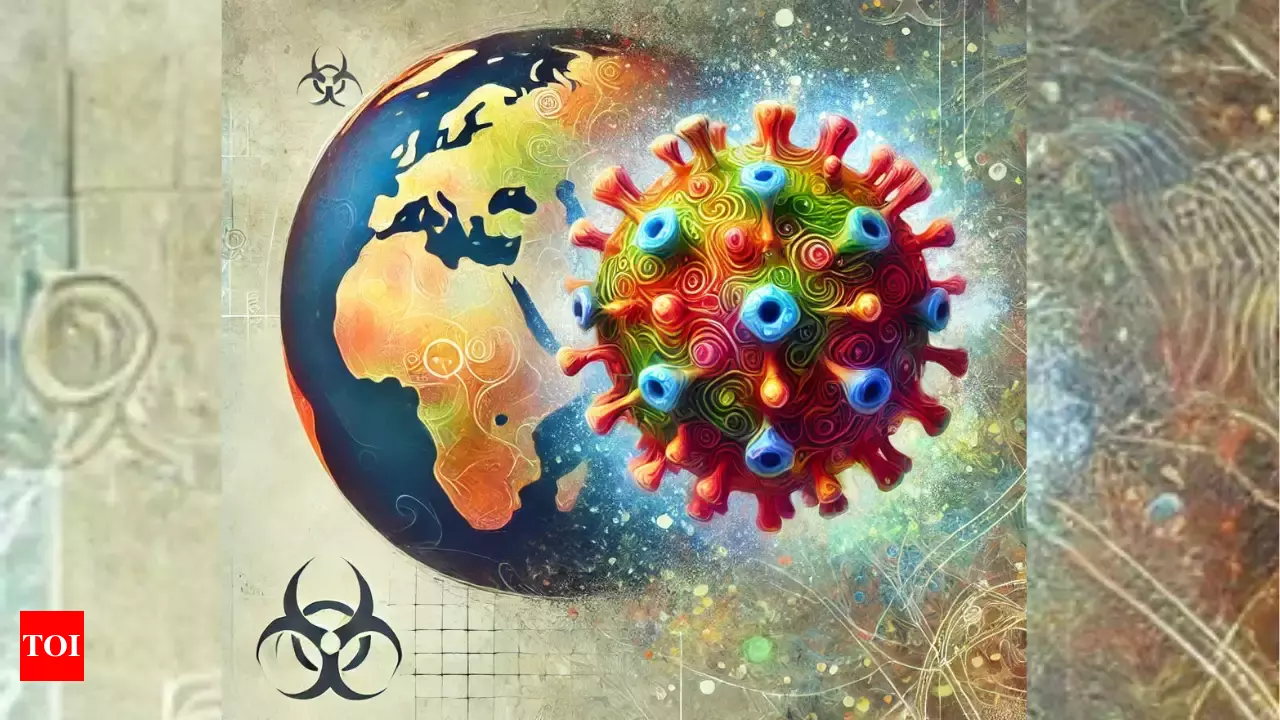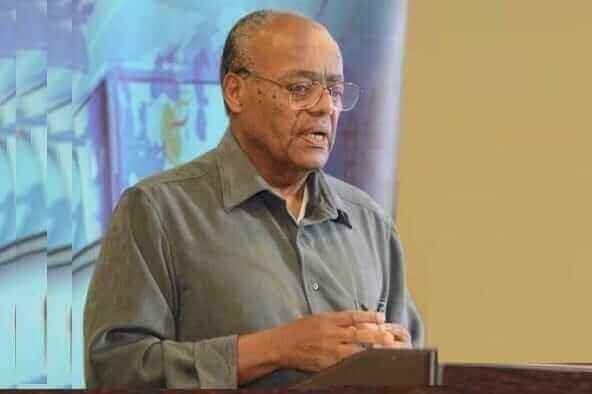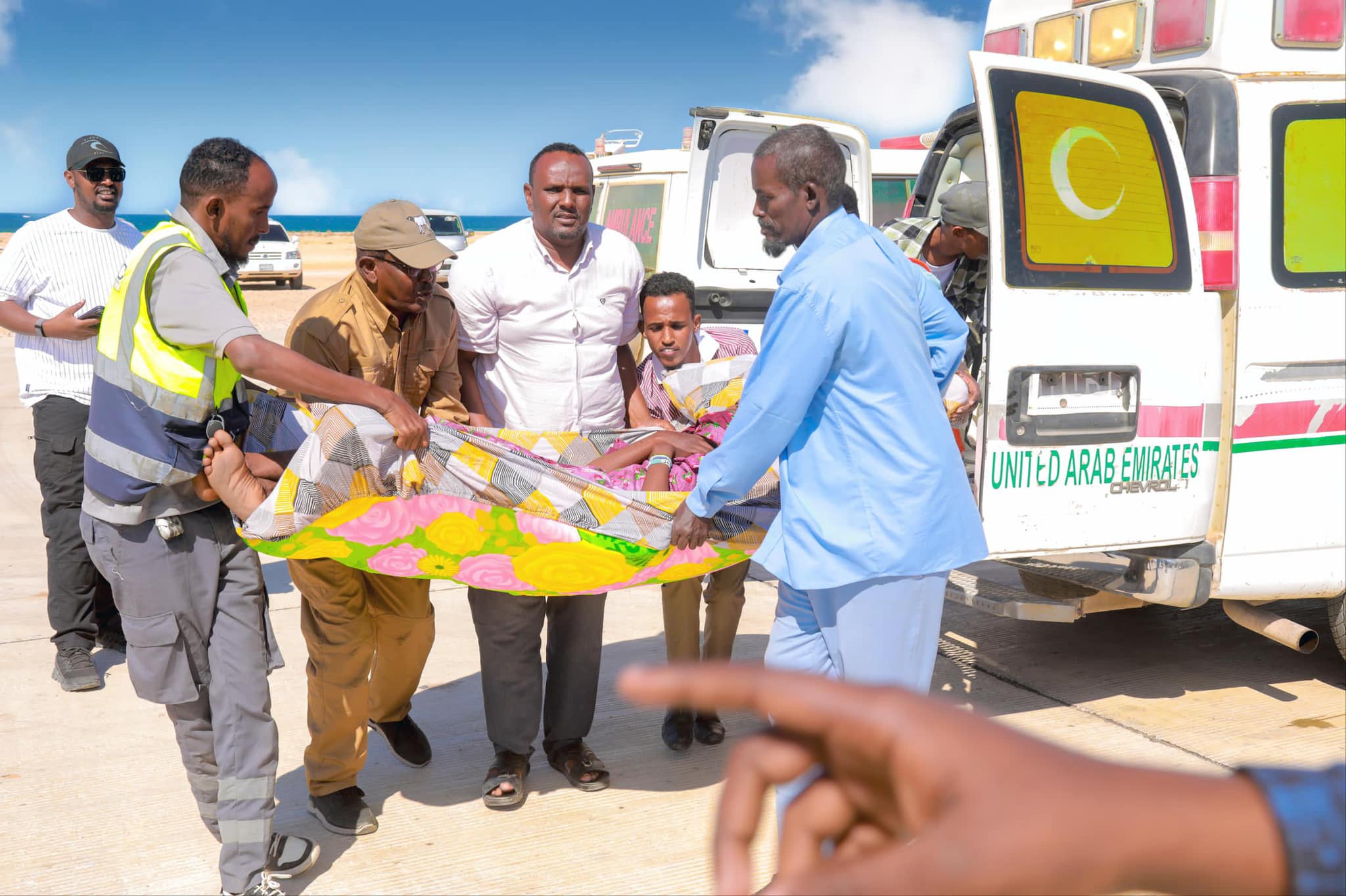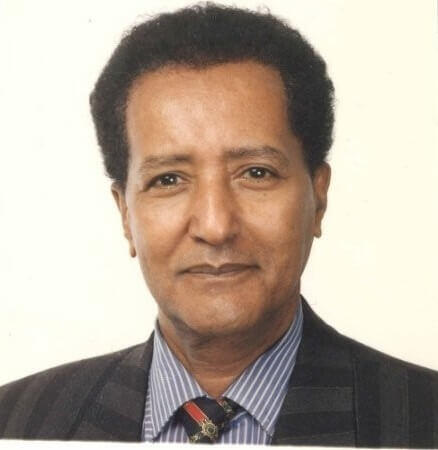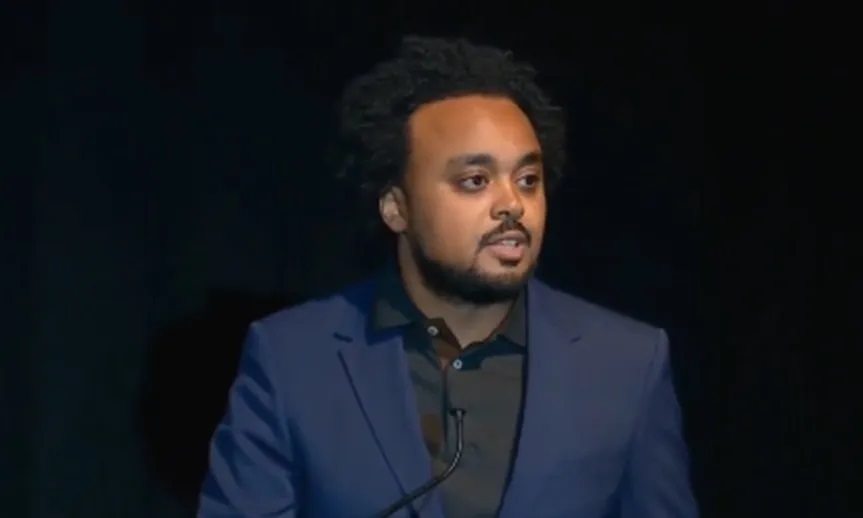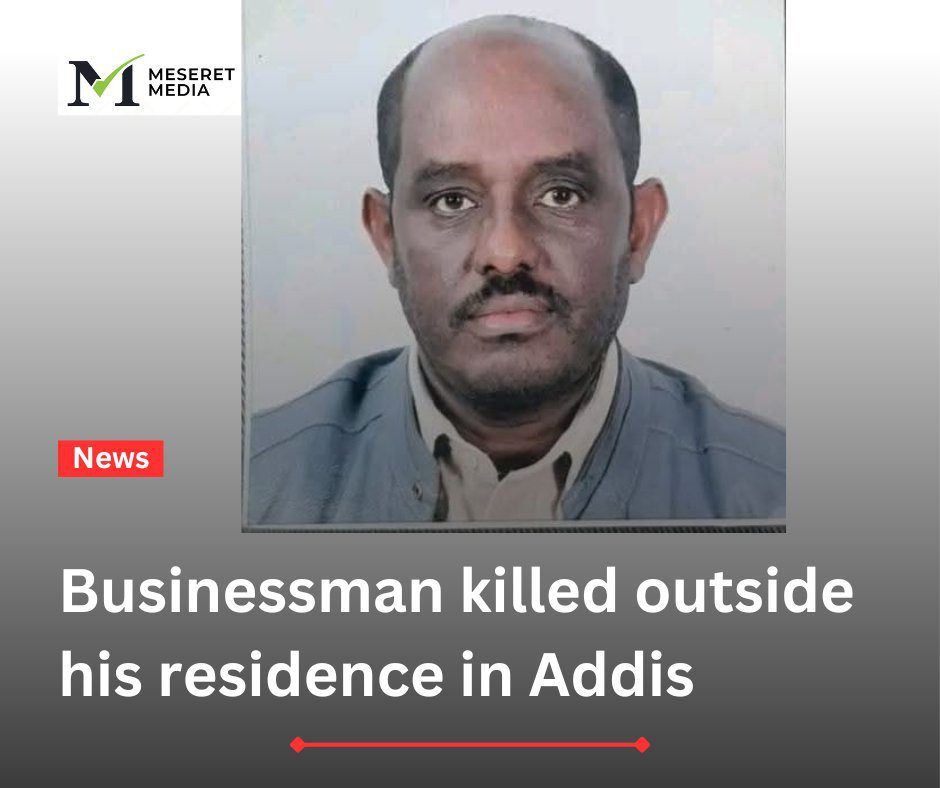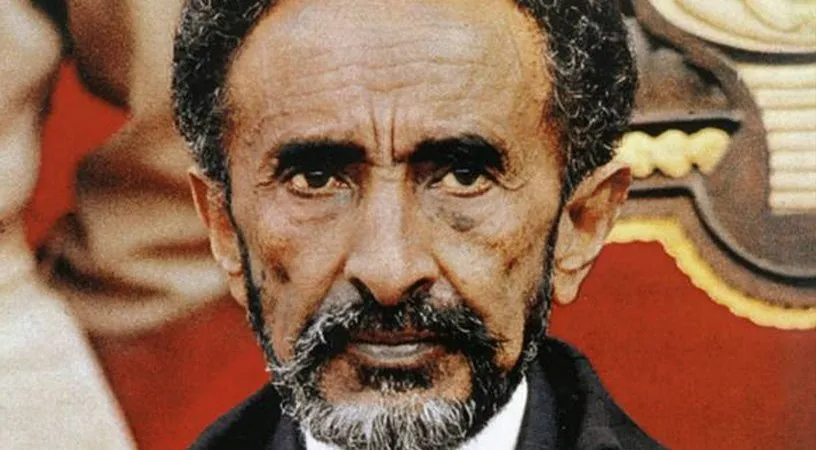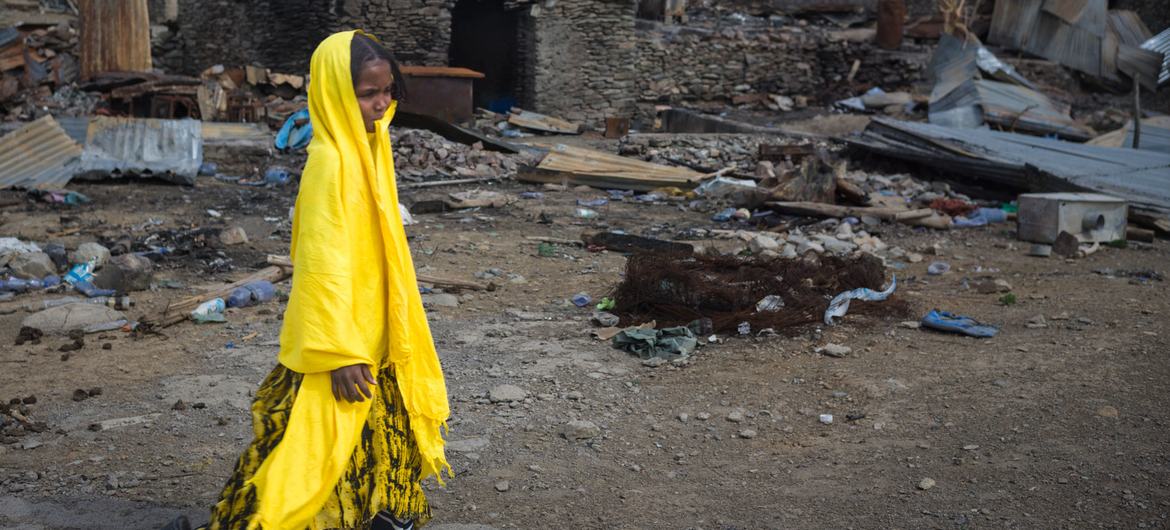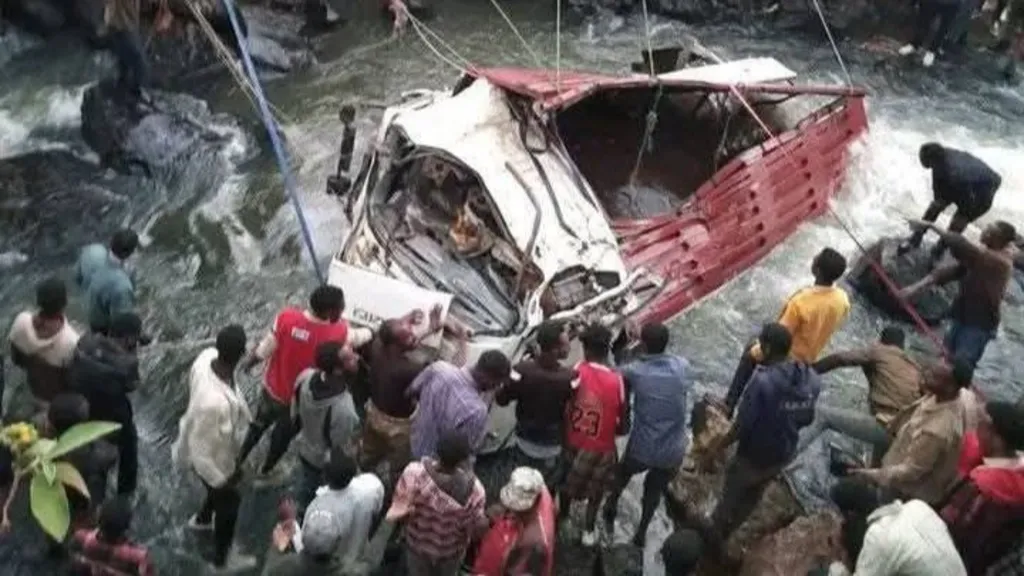Contact information:
 GIRMA BERHANU
GIRMA BERHANU
Professor
GOTHENBURG UNIVERSITY
Department of Education and Special Education
Västra Hamngatan 25, A-hus room 168
Mail address: Box 300, 405 30 Göteborg
office: +46-(0)31-786 2325
mobile: +46 704731818
girma.berhanu@ped.gu.se
Introduction
I must confess that I have struggled to come up with the title of this essay. Knowing all too well what I aim to explain, I am equally aware that the wrong phrase, or a poor choice of words, can immediately offend certain readers. An offended audience are rarely receptive to constructive conversations, but instead tend to react defensively.
As a teacher of research methodology, I am well acquainted with the concept of generalizations both in quantitative and qualitative research. I should also mention that I teach subjects on Ethnicity, Race and Education, and while this limits my willingness to use stereotypes regarding population, race, or cultural groups, I am also keenly aware that stereotypes often hide a kernel of truth. In social psychology, a stereotype is a fixed condition, an over-generalized belief about a particular group or class of people. A simple, neutral example may concern the Japanese: most people readily identify this population as “methodical”, “self-disciplined”, and “good with technology and innovation”. On the same token, few people would identify Japanese as “roudy”, or “prone to rash reactions”. The stereotype, therefore, has an element of truth in it: take a look at Japanese society, its economic development and its recent history, and the issue is self-evident. But, obviously, Japanese are much more than these stereotypes, and indeed, many Japanese probably has little relation to them. While it is important to recognize a “certain background quality in a society”, it is equally important not to over-generalize or to accept that a society is only that quality.
On a similar level, phrases such as “Tigrayans are bandits” or “Tigrayans are traitors” imply that a person belonging to this ethnic group possesses a wide range of characteristics that include banditry, a propensity to gangsterism, to brigandage and marauding, as well as thievery. This assumption, of course, is wrong, but the casual observer in Ethiopia might well come across such statements when discussing the current crisis unfolding in the country. On the one hand, it is easy to dismiss these pronouncements as example of puerile hate speech –which they are– while ignoring that behind such poor choice of words there is a deeper reality that many Ethiopians have experienced: the rule of a Tigrayan elite that elevated ethnic gangsterism into a national state policy, and which committed acts of economic brigandage that left a deep scar across many regions of Ethiopia. Indeed, it is difficult to find any rural area of the country in which there isn’t some event that points to that direction: of agricultural projects that were suddenly scrapped, its benefits swiftly taken back to Tigrayan regions under the careful eye of the all-powerful Tigrayan elites who ruled Ethiopia from 1991 until 2018. (A case in point is the Alemaya Agricultural project)
For those wishing to understand the complex patchwork or ethnic identity, power-struggled and conflict in Ethiopia and the greater region of East Africa, it is advisable to balance the reluctance and disgust they may feel towards such statements of “hate-speech” with a cautious appreciation that behind these words there lies a deeper current of historical dynamics, personal and communal experience and, most importantly, generalized perceptions among the populations that this observer is trying to understand. The advantage of a stereotype is that it enables us to quickly grasp events and dynamics because we may have had an experience-based template in which to frame these events. However, the disadvantage is that it makes us ignore differences between individuals; therefore, we assume traits in people that might not actually be true (i.e. we make generalizations). For more details on this issue, I strongly suggest reading the seminal work by Katz & Braly (1933) about stereotypes.
My aim of this paper is two pronged. Firstly, to shed light on the cruelty and malevolence of the TPLF leadership and its core supporters, in particular to the calculated – cynical– use of victimism in order to make themselves powerful and make others victims themselves. It is, in short, a masterstroke of strategy, but a profoundly immoral one, too. The second objective is to discuss how Ethiopia can survive as an integral entity with all the hatred that has been fueled by the TPLF, in particular its dedicated to target the Amhara ethnic group as the sum of all evils. This is an especially pressing issue in the context of negotiations and a proposed national dialogue commission which is under formulation. Erich Neumann mentions that the cleavage between ego consciousness and unconsciousness enables our regression to the mass-man, and he points out that this mass “is the decay of a more complex unit, not into a more primitive unit but into a centerless agglomeration.”
It may be necessary to engage in such acts of reconciliation, but is it actually possible to make any headway with a political group (the TPLF) that wishes to capitalize on hatred towards another ethnic group (the Amhara)? Some experts claim that war will continue unless the Ethiopian government reaches a political settlement with the TPLF. This comes at the expense of throwing millions of Amharas under the bus: they will be the sacrifice to pay for peace in Ethiopia. It is a nauseating idea: like trying to appease the Nazis (who claim to speak for all Germans) by subjugating, disempowering and, in many instances, literally murdering scores of Poles. The historical analogy is entirely accurate, and in the event it might have served the greater good of peace, but at the cost of an unpalatable tragedy. Peace must prevail, we tell ourselves, but should it prevail at any cost?
Propaganda and perversity
The TPLF is an extremely well-organized movement when it comes to advancing its objectives, even if these objectives have little consideration for the overwhelming majority of Tigrayans, as almost 30 years of TPLF rule in Ethiopia can attest: the region is still one of the poorest, while the TPLF elites have become some of the wealthiest power-brokers in the country.
As a determined and highly-capable organization, the TPLF accepts no form of inner dissent, let alone from Tigrayan citizens. Ruthless as they can be when it comes to deploying violence against dissidents, it has also mastered the art of propaganda that has enabled it to fabricate a national ideology around its core beliefs.
Of all the narrative ingredients that the TPLF has historically held at its disposal, perhaps the most effective and enduring has been the cult of the Greater Tigray, expressed as a historical imperative towards the conquest of a Tigrayan lebensraum that can adequately satisfy the material aspirations of the TPLF and the people it claims to represent. This objective not only bears a striking resemblance to Nazi Germany, but more recently, to the power dynamics of the ruling Rwandan Patriotic Front, which has articulated a similar policy in its expansion outside the Rwandan borders into Eastern Congo. For any such narratives to take hold, they must come at the expense of the local populations who happen to live in these areas: citizens who, quite simply, will cease to be citizens and instead be presented as an existential threat that needs to be eliminated.
In the current Ethiopian conflict, the dehumanization and the violence against Ethiopians, and specifically those of Amhara identity, has been characterized by a concerted effort to distract international observers by claiming that the attacks on Amharas were justified because of their behavior. As such, the victims are portrayed as victimizers, and the ultimate killers can parade their actions as acts of legitimate defence. In this way, the TPLF has successfully solicited the sympathy of the international community while at the same time committing a concerted campaign of abuse against the Amhara. The Amhara are equated as “the central government” –in itself presented as the great abuser of the Tigrayans– and being an innocent farmer, or indeed an elderly woman or a young child, makes no difference in this assessment. It is common for genociders to engage in victim playing; indeed, most genocides are presented as a necessary act of defence against an even greater peril. This serves two purposes:
- It rationalizes and justifies an existential validation in a transactional analysis, a way of dealing with the cognitive dissonancethat results from inconsistencies between the way they treat others and what they believe about themselves as groups.
- It justifies to others, such as outside observers, a strategy of evading or deflecting harsh judgment or condemnation that they fear will inevitably arise or might be provoked due to their abuses (See Berhanu, 2020).
The atrocities committed by the TPLF have not been difficult to discover by Western observers, and yet they have generally ignored the deeper strategic objectives behind them and decided, instead, to play them down as unfortunate acts typical of “the fog of war”. Accordingly, the TPLF has considered itself free and somewhat encouraged to defy all moral and legal boundaries. According to Bronwyn Bruton (2020), despite the massive human rights violations that were associated with TPLF rule—despite the authoritarianism and theft, the imprisonments and the torture that have been laid at its door—TPLF international allies have neither repudiated those well-founded concerns, nor have they examined their own inappropriate investment in the TPLF welfare. International analysts, in their assessments of the current crisis, have repeatedly failed to raise any concerns about any aspect of the TPLF rule, treating them instead as bone fide “rebels” with the implicit connotations of “freedom fighters”, “democrats struggling against a dictatorship”, etc. The fact that the TPLF actually ruled Ethiopia as a ruthless dictatorship for almost 30 years is never mentioned in international media articles, while the Western experts who are invited to their studios conveniently ignore this fact.
For the average Ethiopian, it is easy to guess what a TPLF victory would have meant: they endured TPLF rule for 27 years: a period of ethnic chauvinism elevated as national policy, of blatant corruption and favoritism along ethnic lines, of implacable repression and state surveillance, of mass incarceration and rigged elections. That, as rebels trying to fight their way back to power they indulged in all manner of gruesome massacres only drives the point further, and for as long as the TPLF insists on claiming it represents the entire Tigrayan people, it is inevitable that feelings of deep hatred should arise along the Ethiopian population at large. The massacres of the TPLF and its subservient ally, the OLF/OLA, bear a striking resemblance with what Hannah Arendt herself documented. She was struck by the sadistic nature of some of those who participated in the murder of the Jews. In Arendt’s introduction to Neumann’s 1966 book about the trial of 22 Nazis in Frankfurt, she commented about the charges that the defendants had committed: “No one had issued orders that infants should be thrown into the air as shooting targets, or hurled into the fire alive, or have their heads smashed against walls…. Innumerable individual crimes, one more horrible than the next, surrounded and created the atmosphere of the gigantic crime of extermination (Arendt, as cited in Blass, 1993, p. 36)
One research team from Germany and Denmark defined the D-factor as “the basic tendency to maximize one’s own utility at the expense of others, accompanied by beliefs that serve as justifications for one’s malevolent behaviors.” The researchers discovered that people who score highly on a single dark trait tend to also score highly on several other dark traits, suggesting that there is a common core of darkness: dark traits are related. The 9 traits of malevolence that one finds in this line of research are: 1. Egoism: 2. Machiavellianism: 3. Moral disengagement: 4. Narcissism: 5. Psychological entitlement: 6. Psychopathy 7. Sadism: 8. Self-interest: 9. Spitefulness. According to my limited observations and the stories I have been hearing over several decades about TPLF and extreme Oromo nationalists, including their militant organizations, it is a justified conclusion that the leaders or their ardent supporters appear to have some of these traits of malevolence or The Dark factor.These traits are sources of evil in the sense of profound immorality, demonic and monstrous acts. In my opinion these people ‘lack an inherent human quality: the capacity for thought, consciousness – conscience’. How can we deal with these traits and create a peaceful and hospitable Ethiopia? Is there any hope?
The spread of asymmetrically exaggerated grievance narratives, and outright false historical assertions made by the TPLF and OLF, that have deadly and potentially genocidal consequences, are not widely known and accordingly much less being refuted based on historical facts and evidence.
Rape, Pillage, Plunder and Mass Destruction
In history we have learnt horrible crimes of humanity in situations of war. Looting by a victorious army during war has been common practice throughout recorded history. Foot soldiers viewed plunder as a way to supplement an often meagre income and transferred wealth became part of the celebration of victory. We have observed this act by the TPLF forces during their five months occupation of the Afar and Amhara territories. Accounts of rape and sexual violence are extremely shocking and numerous to detail and have been used as a weapon of war to inflict lasting physical and psychological damage on women and girls. These acts constitute war crimes, and amount to crimes against humanity. The target groups include children at the age of 12 and to the age of 82. Countless number of men and women have been raped. Some reports indicate nuns and monks have been subjected to sexual violence and it was so widespread, the horrible acts were conducted in the open in front of family members, husbands, and grandparents. In some instances, the victims of rape were shot afterwards. Amnesty International has reported that survivors of TPLF attack in Amhara describe gang rape, looting and physical assaults. ‘Survivors described being raped at gunpoint, robbed, and subjected to physical and verbal assaults by TPLF fighters, who also destroyed and looted medical facilities in the towns and cities. Fourteen of the 16 women Amnesty International interviewed said they were gang raped’. After raping the women, TPLF fighters proceeded to loot their homes. Survivors, many of whom live hand-to-mouth by working in low-paid and informal jobs, running small businesses described fighters stealing food, jewelry, cash, and mobile phones. A mother of three in her 30’s is another survivor who spoke to VOA Amharic Service on the condition of anonymity. She said the fighters who came to her home to attack her accused her of being married to authorities and she said she was raped while her children were watching.
It was meant to demoralize the enemy (their women are “dirty” and their men failed to protect). A form of destroying their national identity (getting women pregnant with the children of their enemies). It is a form also of “body horror” as women are tortured and then forced into pregnancy and birth. A form of ethnic cleansing: ” The words of one torturer, quoted from victims’ testimony were: “You will bear a child who will hate you as he will inherit his father’s hates.”
The TPLF forces have looted and pillaged properties of poor farmers and systematically destroyed livestock in retaliation while retreating to its camps in Tigray region. They also destroyed public facilities, schools, and health centers. Plundering and looting properties of the peasants and public utilities were at a mass scale. What was the reason behind dehumanizing verbal assaults and systematically committing large scale looting and destruction of public and private properties? Over six million Afars, Amharas and members of other ethnic groups have been affected in different ways by the inhuman act of the forces of evil. Can these be trusted neighbors in future?
Especially after the current crises, characteristics of distrust and malevolence are, by all accounts, increasingly attributed to the group, which might complicate future collaboration, solidarity, and co-existence. There are many observations and utterances about common behavior of this group of people, which I don’t want to repeat here. They are not too far from the reality. In the introduction of this paper, I mentioned that kind of generalization is wrong. However, where does this stereotype come from? Why? I have no answer at this point. A thorough analysis of cultural psyche might provide us with some knowledge. I suggest my readers to refer to Giselinde Kuipers and Barbara van der Ent (2016) The seriousness of ethnic jokes: Ethnic humor and social change in the Netherlands, 1995–2012
Can anyone estimate the psychological and mental health of the survivors? Who is accountable? Researchers and human rights groups have slowly begun to compile accounts like this, piecing together a troubling picture of cruelty and violence happening inside Amhara region.
I have been depressed by the government’s military strategy and the politics of war and diplomacy. There is some similarity with the negligence and indifference of Stalin during the Second World War. Why did the USSR suffer the most casualties? Several factors contributed to the Soviet Union’s appalling death toll during the Second World War, but most say that poor leadership was the main culprit. Stalin disregarded early warnings that the Germans might attack, leaving Germany’s invasion of the Soviet Union to be the largest surprise attack in military history. He accepted Hitler’s lies about the sudden heavy German presence at the Soviet border and ignored dozens of reports from Soviet spies that an invasion was imminent. Ethiopian leadership cannot be absolved from blame for this unnecessary mass destruction and death that engulfed the Afar and Amhara region. The main reason for the epic proportion of inhumanity demonstrated by the invading forces was vengeance!
In today’s world of mass communication, gruesome content has become just about as normalized in our society as any other piece of information. However, some atrocious crimes of war are so staggering that they simply defy comprehension even to a most desensitized individual. The monstrous attack on the military base and the barbaric murders committed therein actually defy comprehension. The dreadful testimony about that specific attack by Tigrayan members of the military base against their own compatriots from other ethnic groups is virtually beyond comprehension. Imagine, soldiers were killed while still in their pajamas! The dead were stripped naked and left for scavengers to clear. Here, we wonder the cultural psyche of the Tigrayan members of the army. Historians have written that a similar gruesome destruction, looting, and murder happened against Amhara people by the forces from the Tigrayan region during Emperor Yohannes reign. “Various sources have documented the devastation that Ras Kassa (Emperor Yohannes IV) visited upon the Amhara inhabitants of Gojjam, yet the Amharas merely did their best to thwart Yohannes’ attempt to subjugate them, but at no point did they march to Tigray for revenge, let alone for extended domination”.
False narratives and twisted beliefs
Who started it? Who carried out the atrocities — massacres, summary executions, mass rapes, pillage, hospital lootings, the arming of children — that people from across northern Ethiopia/Amhara region have recounted, either in their ransacked villages or in temporary shelters for internally displaced people? War crimes or crimes against humanity is/was underway. The TPLF distorts history, play victim, and manipulate information. Every single aspect of the war has been automatically blamed on the central government. The refugees are fleeing because of them, not because the TPLF is recruiting en-masse in village after village –and good luck refusing their requests.
In Ethiopia, concerns over disinformation, fake news, and grievance politics by ethnic-nationalist groups such as the TPLF and OLF have intensified in recent years. Policymakers, researchers, and observers worry that these groups team up with notorious Western journalists to spread false narratives and disseminate rumors in order to shape international opinion and, by extension, government policies. The available evidence suggests that the strategic effects of disinformation are real in the Ethiopian case. Fake news, hate speech and misinformation are creeping through all social media platforms and regular media outlets. With more and more people relying on social media as a source of news, there are legitimate concerns that such content could influence audiences unable to distinguish truth from fact or news from propaganda. This “infodemic,” as Dustin Carnahan calls it, puts misleading information front and center —adding fuel to politically contentious fires and escalating social issues to the level of crises. Instead of being places where people stay connected and share the details of their lives, modern media/social media platforms are increasingly being used as sources of information. The TPLF and its supporters especially in diaspora are sophisticated in using the modern technology to continuously spread fake news, hate speech and misinformation. Is this just only the work of TPLF? How much is this hate ingrained in the cultural psyche of the residents from which the terrorist group emerged?
Social media platforms have come to take up so much of our lives that the decisions these platforms make could have a significant impact on how we understand and engage with our world. In a democracy, we need to experience a plurality of voices and, critically, to have the skills, experience, and knowledge to gauge the veracity of those voices. While the Internet has brought many freedoms across the world and an unprecedented ability to communicate, it also carries the insidious ability to distort, mislead and produce hatred and instability. That terrorist groups master the skill for the wrong motive is worrying for global peace! It functions on an unprecedented scale and speed. What is most depressing is that journalists actively become part of this misinformation and disinformation or low-quality reporting. They have become a vehicle for misinformation and disinformation. They collect data from the wrong people and write skewed stories in which quotes are misremembered and facts are twisted.
The western media’s reporting on the conflict both in northern Ethiopia and the rest of the country has been unbalanced and consistently biased against Ethiopia. This should come as no surprise. The western media is doing little to no investigative reporting. It does not even try to give a complete picture of the conflict. It has not looked carefully at the role that the TPLF has played in the Ethiopian problem. A senior defense analyst, Gregory Copley, considers Ethiopian Prime Minister Abiy’s caving to US pressure on the problem of Tigray as “Opening the Region to Major Instability”. Copley has further stated that what is significant is that there has been no independent verification of the claims of Ethiopian and Eritrean government atrocities against the Tigrayan population. The TPLF has, with some of the estimated $30-billion stolen from Ethiopian funds (and much of that coming from US direct and covert aid during the US Barack Obama-Joe Biden Administration), engaged in a major, professional information warfare campaign against the Government of PM Abiy Ahmed which replaced the TPLF-led Government. This has been assisted by the reality that the TPLF retained great friendships in Washington, DC, because of the deal which the former TPLF-led Government of Meles Zenawi did with Washington to train and equip the TPLF’s private, 30,000-man army in exchange for US use of Ethiopian air-force bases, particularly at Arba Minch, in Southern Ethiopia
Diaspora and TPLF operatives: Threat, intimidation, and sabotage
Within the Ethiopian diaspora we are accustomed to threats, intimidation and overall character assassination by TPLF supporters. They relentlessly follow up our writings or interviews in the media and confront us physically or send complaints to our employers. They send twitter links to University Officials, including emails and phone calls, accusing respected intellectuals of advocating the ethnic cleansing of Tigrayans. A primary school teacher in Sweden became a target a year ago. His only crime was to a thumbs-up gesture on Facebook when the Ethiopian National Defense Force entered Mekelle, the Tigrayan capital. Someone wrote a long letter to this person’s employer insisting that he is unfit to teach Swedish children. There are hundreds of cases of this nature. The TPLF want to silence the true Ethiopians from engaging in their homeland’s affair. Even foreign intellectuals of high caliber have been subjected to similar harassment, by trying to embarrass their respective universities and reputations. One good example is the attempt to discredit Professor Ann M. Fitz-Gerald’s name. Ann Fitz-Gerald is a Professor of International Security and the Director of the Balsillie School of International Affairs in Waterloo, Canada. In November 2012, the Government of Canada awarded Ann with the Queen’s Diamond Jubilee Medal for her contribution to post-conflict resolution and dialogue. Since 2013, she has served as a Senior Security and Justice Adviser to the UK Government and is a member of the United Nation’s Rule of Law and Security Institutions’ expert roster. The TPLF also called on its foreign supporters so that they demanded her dismissal. Her crime had been to call out the atrocities committed by the TPLF.
For Ethiopia, the threat against its unity, even its very existence, stems from interlocking factors that make up much of the TPLF ideology:
- A tactical lack of perspective, according to which Tigray has the right to armed confrontation in order to avoid being a peripheral region of Ethiopia. In other words, Tigrayans can only expect an improvement if their political elites control the “biggest slice of cake” (i.e. central power in Addis Ababa). This logic fails to consider that most regions of Ethiopia can claim a similar predicament, and if each region pursues an armed struggle for the same reasons as the TPLF, then the entire country would be in flames (indeed, the entire continent).
- A stubborn pursuit of self-aggrandizement, according to which Tigray has a historical mandate to rule the rest of Ethiopia due to its historical heritage as the heartland of ancient Aksum and the Ethiopian Orthodox Church. For an organization that claims to represent the right to a “federal existence between equals”, it is a narrative reminiscent of apartheid South Africa and its “Dutch-speaking chosen people of God”. Ethiopia belongs to all Ethiopians, and its central government should never become the marketplace for a narrow clique of ethnic chauvinists, which is what it became for 27 years under a TPLF-led government,
- An appalling deficit of moral strength, by which the political objectives of the TPLF are not only equated to the rights of all Tigrayans, but also to the physical harm of Amharas. Once again, for an organization to claim moral rights to pursue an armed struggle, it is appalling that they openly defend the idea that their rights must come at the expense of the rights of Amharas.
The country is in the process of stepping into ‘a long process of building national consensus, sustainable peace, and reconciliation by establishing its first-ever national dialogue commission’. Lawmakers have approved a bill to establish a commission, amid international pressure for negotiations to end the 13-month conflict. The full details have yet to be open to the public. A number of Diaspora think tank and organizations have expressed concern over the process and conditions for negotiations. Little can be said at this stage. The most important that law abiding Ethiopians demand is that the terrorist groups should be accountable for the targeted genocide and ethnic cleansing they conducted in those war affected areas; for the systematic destruction of individual properties, public facilities, and systematic wide scale looting; for crimes against humanity demonstrated in gruesome rape, sexual violence and torture.
My position is that it is not right to blame an entire group collectively in this specific case the entire Tigrayans, simply because members of the group have committed horrendous crimes, genocide or massacres, or have shown indifference to the plight of others. Legal analysts and philosophers still argue about the phenomenon of collective guilt. The English dictionary defines collective guilt as guilt that is shared by a group of people over an act or actions that are seen as shameful. It is not commonly talked about, but does in fact manifest, for instance that the Afrikaners of South Africa have a collective guilt over Apartheid. So do the Germans with regard to the Holocaust. In this regard, it should have probably been high time to hear from the ethnic Tigrayans such voices as: ”Not In My Name”. All the same, the phenomenon of collective responsibility, also known as collective guilt, is a highly contentious matter in the Ethiopian context. Are all the Tigrayans responsible for the atrocities of TPLF — through tolerating them, ignoring their criminal activities, harboring them, or actively collaborating in their actions? This collectivist idea that groups of humans can bear guilt above and beyond the guilt of individual members, and hence individuals hold responsibility for what other members of their group have committed, even if they themselves did not, is problematic in my view. However, at least a symbolic resistance or some form of manifestation is morally expected from the Tigrayan people, and their civil societies, because the crime is being committed in their names. After all, if they do not ally with the oppressed segments of the Ethiopian population, history will harshly judge them. Moreover, one expects some form of dissent or disagreement with the methods, goals, and policies of the political party, local security forces and government. In any case, Tigrayans should not all be held collectively responsible for the crimes of their elites, although it may be argued that they have a moral responsibility.
The key components of the basic notion of moral responsibility, as David Risser accurately captured, are deeply rooted in the fabric of every society and are constitutive of social life. Without some conception of moral responsibility, no amount of imaginative insight will render a society recognizable as a human society. While there is broad, often tacit, agreement regarding the basic model of moral responsibility as it applies to individuals; there is considerable debate about how this notion might be applied to groups and their members.
I have attempted to shed light on the cultural heritage of the TPLF manifested in the form of vindictiveness, war, and destruction. The strategic use of victimized narratives for the destruction of a state is the major engagement of this destructive force to retain power at all costs. My fear is that a similar force (OLF-Shene) is as destructive as its TPLF mentor. Their genocidal crimes have less coverage in the media, though, and there are plenty of allegations that the security forces within the Oromia region are accomplices. In connection with one of the many ethnic-based mass killings in the Oromia region, the Prime Minster himself said “Enemies of Ethiopia are using their maximum efforts either to rule the country or ruin it. One of their goals is to bring despair to our people.”
A meaningful and sustainable peace process implies an impartial and unbiased view of the past, the present and the future. The past must be dealt with before one can benefit from the present to its fullest extent and (re)build in preparation of a more peaceful future. When one’s suffering intensifies under the influence of “old and “new stressors, one is left with precious little resources to deal with his or her own daily battles and even less to (re)construct or transform one’s environment and society. Denial [including victim playing, ‘grievance-based false identity’, the cult of victimization prevents the survivors from moving on as he or she is repeatedly thrown back into the past where they relive and attempt to sort out what happened, why, how, and the then what.
The Ethiopian government must take the following actions now:
- To reach out immediately to the survivors and protect them from the criminals who are coming back again and again for mopping up operations, as seen in many parts of the country.
- To find ways of supporting the victims so they can reclaim their shattered lives and provide help for the orphans and widows.
- To help stop the Victim Playing politicsand the false grievance-based identity
- Confiscate all illegally held properties of TPLF officials who have been accused of war crime and use the funds to rebuild areas devastated by the invading force of the TPLF and compensate rape victims and those who lost their lives and livelihood.
While I was about to finalize my article, a shocking news has emerged that amnesty has been granted to terrorist and extremist leaders by Prime Minister Abiy Ahmed of Ethiopia. The amnesty grant has stirred a lot of emotions and confusion. Most Ethiopians are deeply troubled by the decision to release key TPLF criminals. Some of the comments in the media read “I want to be proven wrong but the Prime Minister is out of his mind”, “The Prime Minister has blatantly and repeatedly betrayed the trust of the innocent people”. In part II, I will attempt to come up with action plans on how to deal with Political Psychology of Revenge, and Cultural Psyche of groups. That requires a long-term programme.
I summarize my reflective paper with an e-mail message I just received from a former diplomat and army officer: When a society that was built on sand and never agreed on its differences or on its common shared values eventually produces an elite group that is poisonous and takes the manufactured history as the only way forward: then the society decays and evolution takes over and truth does not matter. Truth becomes an illusion which can be taken or rejected at convenience. Then, there will be no Ethiopia because the premise upon which this country was created and nurtured is no more taught and accepted by the new generation nor does this generation knows or cares to know about what we used to be. In the end what matters is the history of now: the propaganda of now and the manufacturing of consent: a form of art that is being successfully practiced today.
References
Matthew J. McCracken, Abusing Self-Determination and Democracy: How the TPLF Is Looting Ethiopia, 36 Case W. Res. J. Int’l L. 183 (2004). Available at: https://scholarlycommons.law.case.edu/jil/vol36/iss1/8
Katz, D., & Braly, K. (1933). Racial stereotypes of one hundred college students. Journal of Abnormal and Social Psychology, 28, 280-290. Cardwell, M. (1996). Dictionary of Psychology. Chicago IL: Fitzroy Dearborn.
Erich Neumann, The Origins and History of Consciousness (Princeton, NJ: Princeton University Press, 1970.)
Bronwyn Bruton. FRI, NOV 13, 2020. Calls for negotiation are driving Ethiopia deeper into war. Africa Source by Bronwyn Bruton. Africa Conflict Ethiopia Politics & Diplomacy Security & Defense
Leonard Berkowitz (1999) Evil Is More Than Banal: Situationism and the Concept of Evil. DOI: 10.1207/s15327957pspr0303_7. Pers Soc Psychol Rev 1999; 3; 246
Ethiopia: Survivors of TPLF attack in Amhara describe gang rape, looting and physical assaults
https://www.voanews.com/a/amnesty-report-details-accounts-of-rape-by-tigrayan-forces-in-ethiopia-s-amhara-region-/6307309.html
Giselinde Kuipers and Barbara van der Ent (2016) The seriousness of ethnic jokes: Ethnic humor and social change in the Netherlands, 1995–2012. Published on Oct 1, 2016 in Humor: International Journal of Humor Research. DOI :10.1515/HUMOR-2016-0013
https://www.voanews.com/a/africa_ethiopia-declares-emergency-after-attack-federal-military-base/6197965.html
In its founding manifesto, TPLF boldly asserts that the Amhara elites are the “enemy of Tigray ” and vows to fight and bury them so that Tigray could have “lasting peace”. The problem with this claim is that one will be hard put to find a period in Ethiopian history when Amharas as an ethnic group “dominated” Tigrayans to the extent of forcing them to raise arms. There is not a shred of historical evidence which proves that Amharas invaded and looted Tigray, denied Tigray the right to be governed by Tigrayans, forced Tigrayans to change the language they speak, made them practice Amhara culture (which in fact is a shared culture with Tigray), or forcefully annexed their territory. On the contrary, there is documented history of the Tigrayan invasion of the Amhara people, accompanied by looting, killing, and annexation of the latter’s territory. What Ras Michael Sihul, (a Tigrayan autocrat who was the power behind the puppet king in Gondar) did in the 17th Century, Bezbiz Kassa (later emperor Yohannes IV of Ethiopia) in the 19th Century are worth mentioning here. (James Bruce has meticulously recorded Mikael’s cruelty to the Amhara inhabitants of Gondar, then the seat of power). Likewise, various sources have documented the devastation that Ras Kassa (Emperor Yohannes IV) visited upon the Amhara inhabitants of Gojjam, yet the Amharas merely did their best to thwart Yohannes’ attempt to subjugate them, but at no point did they march to Tigray for revenge, let alone for extended domination. (https://www.hornafricainsight.org/post/deceit-plunder-and-unrivaled-inhumanity-the-diabolical-legacy-of-tigray-people-s-liberation-front)
https://www.hornafricainsight.org/post/deceit-plunder-and-unrivaled-inhumanity-the-diabolical-legacy-of-tigray-people-s-liberation-front. by Yosief Anteneh Yihunie.
Ethiopian Prime Minister Abiy Caves to US Pressure on Tigré, Opening the Region to Major Instability
https://zehabesha.com/the-banality-of-evil-how-tplf-has-evolved-into-a-nefarious-and-villainous-death-machine-2/
For a further analysis of the phenomenon see French, Peter A., ed., Individual and Collective Responsibility, (Cambridge, Mass: Schenkman, 1972).
Berhanu, G. (2017). Intellectual Genocide in the making?: The Strong and Pervasive Evidence of Ethnic Inequalities in Ethiopia. Advances in Social Sciences Research Journal, 4(13). https://doi.org/10.14738/assrj.413.3459
https://www.aa.com.tr/en/africa/ethiopia-in-uproar-after-ethnic-based-mass-killing/2028623

